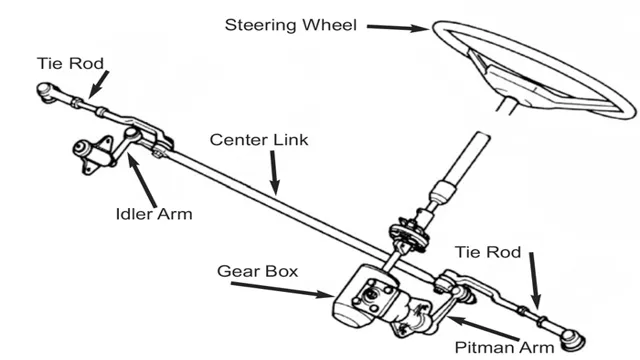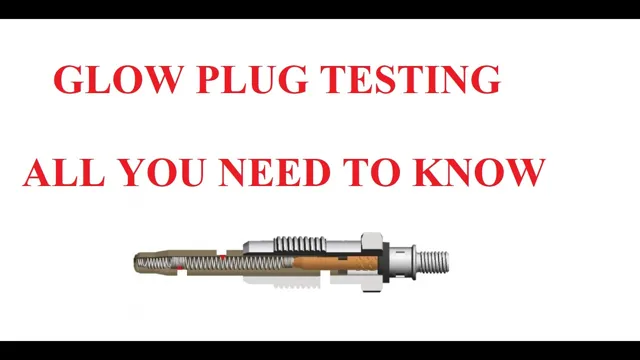Master the Art of Steering by Learning How to Center Your Gear Box: Step-by-Step Guide
Is your steering wheel off-centered? Do you find yourself constantly adjusting it while driving? The culprit may be a misaligned steering gear box. While this might seem like a daunting task, centering your steering gear box is actually a straightforward process that you can do yourself with the right tools and a little bit of know-how. In this blog post, we’ll walk you through the steps you need to take to center your steering gear box and get your car running smoothly again.
So buckle up and let’s get started!
Gather Necessary Tools
Before centering your steering gear box, it is important to gather the necessary tools to make the process go smoothly. The tools you will typically need include a socket wrench set, a steering wheel puller, a tie-rod end puller, a pitman arm puller, and a torque wrench. Additionally, you will want to have some penetrating oil and a wire brush on hand to help remove any rust or debris that might be in the way.
Make sure that you have these tools readily available before beginning the centering process, as it can be frustrating to have to stop midway through to go hunt for a missing tool. With all the necessary tools at your disposal, the process of centering your steering gear box can proceed quickly and smoothly, allowing you to get back on the road without delay.
Examples: sockets, wrenches, pliers
When tackling a DIY project, it’s important to gather all the necessary tools before starting. Some examples of tools that may be needed include sockets, wrenches, and pliers. These tools allow you to tighten or loosen nuts and bolts, grip and hold objects in place, and make adjustments to various components.
Before beginning your project, take inventory of the items you will need and ensure that you have the proper tools for the job. This can save you time and frustration in the long run, as attempting to use the wrong tool may cause damage or make the task more difficult. By having the necessary tools on hand, you can approach your DIY project with confidence and ensure that your end result is successful.
Locate the Gear Box
If you’re looking to center your steering gear box, the first step is to locate it in your vehicle. Typically, the gear box is located on the frame or chassis of the vehicle, near the steering column. You may need to remove a few parts to gain access to it, such as the air cleaner or battery.
Once you’ve located the gear box, you can begin the process of centering it. It’s important to note that centering the gear box is not always a simple task and may require a bit of trial and error. However, it’s an important step in maintaining the steering system of your vehicle and ensuring safe operation on the road.
So, take your time, follow the instructions carefully, and don’t be afraid to ask for help if you need it.
Examples: under the car or on the steering column
If you’re looking to locate the gear box in your car, it’s important to first understand what a gear box actually does. Essentially, this component is responsible for transferring power from your engine to your car’s wheels. While the gear box can be located in different places depending on the make and model of your vehicle, there are a few common places where you’re likely to find it.
One example is beneath the car, near the center of your vehicle. This can be a bit tricky to access, but it’s important to know where it is if you need to change the transmission fluid or perform any other maintenance. Another common location for the gear box is on the steering column, which is the vertical bar behind your steering wheel.
This position allows for easy shifting between gears while you’re driving. Regardless of where your gear box is located, it’s important to stay familiar with your vehicle’s components so you can quickly identify any potential issues. By taking the time to locate your gear box and understand its role in your car’s performance, you’ll be well on your way to being a more knowledgeable and confident car owner.
Remove the Pitman Arm
Removing the pitman arm is an important step when centering the steering gear box. To start, loosen the nut on the pitman arm and use a puller to separate it from the steering box. Before doing this, make sure to mark the location of the pitman arm and steering gear box to ensure proper alignment later on.
Once the pitman arm is removed, inspect it for any damage or wear, and replace if necessary. It is also a good idea to grease the pitman arm before reinstallation. This process may require some elbow grease, so don’t be afraid to ask for help if needed.
Once the pitman arm is removed, you can move on to centering the steering gear box. With this done correctly, you’ll experience smoother steering and better handling on the road. Don’t forget to tighten the nut before reattaching the pitman arm.
Examples: use a pitman arm puller
When it comes to removing a pitman arm, using a pitman arm puller is the way to go. This tool is specifically designed to make the removal process easier and more efficient. First, you’ll need to disconnect the steering linkage from the pitman arm.
Once that’s done, place the puller around the pitman arm and tighten the bolts until the arm pops off. It’s important to note that you should never use a regular gear puller for this task as it can damage the steering box. By using a pitman arm puller, you can remove the arm safely and without any hassle.
So if you’re planning to do this task on your own, make sure you have this tool on hand.
Center the Gear Box
If you’ve noticed your car pulling to one side or the other, the issue could be with your steering gear box being off-center. It’s important to fix this issue as soon as possible, as it can result in uneven tire wear and other damages to your vehicle. Here’s how to center your steering gear box: first, locate the gear box.
It’s typically found on the driver’s side of the vehicle, connected to the steering shaft. Then, loosen the bolts on the frame that hold the gear box in place. Use a pry bar to gently move the gear box until it’s centered, then retighten the bolts.
Test your car’s steering to make sure it’s working smoothly and not pulling to one side. If the issue persists, it may be time to consult a professional mechanic for further diagnosis. Overall, centering your steering gear box is an essential part of maintaining the safety and condition of your vehicle on the road.
Examples: use a centering tool or count the number of turns
When it comes to the proper functioning of machinery, particularly gear boxes, it is crucial to ensure that all components are properly aligned. Centering the gear box is a crucial step in this process, as it ensures that the gears are properly aligned for optimal performance. One effective method for centering a gear box is to use a centering tool, which is a device that fits into the hole of the gear and helps to align the gear with the shaft.
Another option is to count the number of turns it takes to properly center the gear box. This involves turning the shaft in small increments and checking for any misalignment. By using these methods, technicians can ensure that the gear box is properly centered, leading to optimal performance and longevity of the machinery.
So always keep in mind the importance of centering your gear box, for a smooth and efficient functioning of your machinery.
Reinstall the Pitman Arm
If you’re wondering how to center the steering gear box, reinstalling the Pitman arm is a crucial step in the process. The Pitman arm connects the steering box to the center link, which then connects to the steering linkage that turns the wheels. To begin, first, locate where the Pitman arm is connected to the steering box and mark its position.
Then, remove the nut and bolt securing it to the steering box and carefully remove the Pitman arm. Once you’ve replaced any worn or damaged parts, reinstall the Pitman arm and align it with your previous marking. Tighten the nut and bolt securely and double-check your alignment to ensure that your steering gear box is now centered and functioning correctly.
Don’t forget to test it out and make any necessary adjustments before hitting the open road!
Examples: torque to manufacturer’s specifications
When it comes to properly reinstalling the pitman arm on your vehicle, it’s crucial to torque it to the manufacturer’s specifications. This ensures safe and secure steering, as well as prevents damage to other parts of the steering system. Begin by aligning the splines on the pitman arm with those on the steering gear shaft, making sure they match up correctly.
Install the retaining nut and washer, and use a torque wrench to tighten the nut to the recommended specification. Be sure to double check the torque and make any necessary adjustments. Taking the time to torque the pitman arm properly can prevent accidents on the road and save you from costly repairs down the line.
Trust me, it’s worth the extra effort!
Test the Steering
If you’ve noticed that your car is pulling to one side or the other while driving, your steering might need to be adjusted. In particular, you might need to center your steering gear box. To do this, the first step is to test your steering.
Take your car out on a straight, level road and let go of the steering wheel for a moment. Does the car drift to one side or the other? This will give you an idea of whether your steering is off-center. Next, locate the adjusting screw located on the top of the steering gear box.
Turn the screw to move the pitman arm (which attaches to the steering linkage) until the steering wheel is centered. Test your steering again to make sure it’s now straight and true. By doing these simple steps and centering your steering gear box, you’ll ensure that your car drives smoothly and safely every time you’re on the road.
Examples: drive the vehicle and check for any issues
When it comes to testing the steering of a vehicle, there are a few key things to keep in mind. First off, it’s important to find a safe and open space where you can test the steering without running the risk of colliding with any obstacles. Once you’ve found such a space, get behind the wheel and start driving the vehicle at various speeds, making sure to turn the wheel sharply in both directions.
As you do this, pay close attention to how the vehicle handles and responds to your inputs. Is the steering tight and responsive, or loose and unresponsive? Are there any odd sounds or vibrations coming from the steering system? If so, these could be indications of underlying issues that need to be addressed. Overall, testing the steering is an important part of ensuring your vehicle is safe and reliable on the road, so don’t skip this important step when performing routine maintenance or making any significant changes to your car.
Conclusion
In conclusion, centering your steering gear box is both a science and an art. It requires patience and precision, much like a musical conductor leading a symphony. But fear not, with the right tools and technique, you’ll have your steering gear box centered and your vehicle running smoothly.
Just remember, as with any delicate task, take your time, stay focused, and don’t be afraid to ask for help. And if all else fails, just blame it on the road gremlins – they always seem to be causing trouble.”
FAQs
What is the function of a steering gear box?
The steering gear box is responsible for translating the rotation of your steering wheel into the lateral movement of your tires.
How do I know if my steering gear box needs to be centered?
If you have difficulty turning your steering wheel from side to side, or if your vehicle drifts to one side while driving, it may be necessary to center your steering gear box.
What is the process for centering a steering gear box?
Centering a steering gear box involves adjusting the position of the pitman arm, and may require special tools or equipment. It is recommended that this procedure be performed by a professional mechanic.
What are the consequences of driving with an uncentered steering gear box?
Driving with an uncentered steering gear box can cause uneven tire wear, difficulty steering, and poor handling, which may affect the safety and control of your vehicle.





